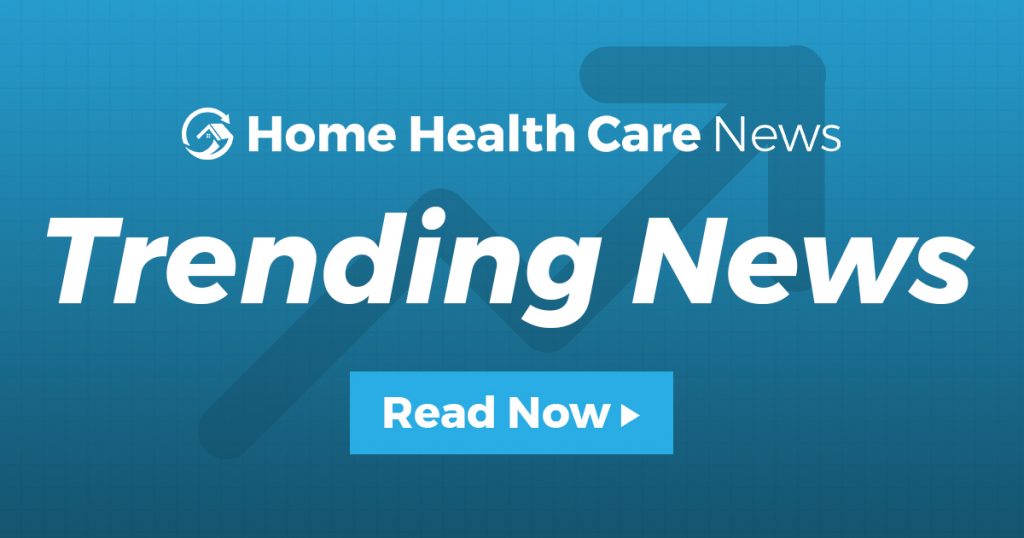
Proposed Payment Rule Could Trigger $18B Cumulative Cut to Medicare Home Health Reimbursement
The U.S. Centers for Medicare & Medicaid Services (CMS) has not proposed a negative aggregate payment adjustment for home health agencies for the following year since 2018.
That stable Medicare-reimbursement landscape, in turn, has allowed home health operators to grow their businesses and test out new, innovative care models, while also investing in their workforce. This period of stability, however, is inching closer to a potential end.
“You’re hearing loud and clear from the home health provider community that this is a real gut punch, and it will harm access to care for the Medicare population,” Joanne Cunningham, CEO of the Partnership for Quality Home Healthcare, told Home Health Care News. “The size and the nature of … these reductions, what they would do to the Medicare home health program, would be severe.”
Released on June 17, the 2023 home health proposed payment rule seeks to lower aggregate provider payments by 4.2%, or about $810 million. That figure includes a 2.9% Medicare payment increase, as well as a 6.9% cut related to the Patient-Driven Groupings Model (PDGM) and a 0.2% cut related to outlier payments.
If finalized as is, the proposed rule would have an immediately devastating effect on home health providers across the U.S., industry advocates caution. Specifically, such a cut would hinder patients’ access to care, stifle innovation and further cool what has otherwise been a hot M&A market.
Cunningham and other leaders from PQHH are in Washington, D.C., this week to ask lawmakers to take action against the looming cuts. They’re joined by leaders from the National Association for Home Care & Hospice (NAHC).
“Home health services bring proven value to patients and Medicare with high-quality care that is cost-effective,” NAHC President William A. Dombi said in a statement. “This proposal would jeopardize the continued availability of thousands of providers throughout the country.”
It’s the longer-lasting impact of CMS’s plan, too, that has home health stakeholders worried about the future.
“You will see fallout,” Cunningham added. “And you will see communities that that will be impacted.”
In addition to immediate cuts, CMS floated plans to eventually claw back upwards of $2 billion in Medicare reimbursement. That’s because, in its estimate, PDGM’s original design overpaid home health providers and did not end up budget neutral, as mandated by Congress.
Using its own methodology to compare the old Prospective Payment System (PPS) to the current model, CMS believes a downward adjustment of 7.69% is needed to balance out PDGM.
“What they’re essentially doing is looking at actual data under [PDGM] for 30-day periods, recalibrating them as if they were 60-day episodes under the old PPS system and seeing what spending would look like in each of those scenarios,” Brian Harris, a financial consulting director for SimiTree, explained during a recent webinar. “That is CMS getting out ahead of what they anticipate pushback to be to this rate cut.”
PQHH has spent “about a year” talking to CMS officials about that methodology, Cunningham said.
“We pointed out to them that when they’re doing the same exercise on the [skilled nursing facilities] side, which is essentially a parallel universe, they use a different methodology for determining budget neutrality,” she said. “And it makes much more sense.”
Overall, PQHH and NAHC estimate that CMS’s proposed rule would translate to a roughly $18 billion cumulative cut to Medicare home health reimbursement over the next decade.
The total impact of the 7.69% permanent adjustment to the Medicare home health program and PDGM from 2023 through 2032 would total $15.15 billion, according to the organizations. The remainder of the $18 billion comes from possible CMS clawbacks.
Providers could take a $1.33 billion hit in 2023 alone.
In some ways, the magnitude of these cuts feels similar to the late 1990s, when CMS transitioned from the Interim Payment System (IPS) to PPS, Cunningham said. That transition resulted in more than 30% of home health agencies exiting the market, according to some estimates.
“I’ve been sitting with providers all day long, and that’s the only thing that’s analogous to what we’re seeing today,” she said.
To avoid this scenario, PQHH and NAHC are calling on members of Congress to intervene through bipartisan legislation. Some lawmakers already appear open to supporting the industry, Cunningham said.
“First of all, there’s certainly support for the home health sector and an appreciation that the home health community really stepped up during COVID,” she said. “There is [clearly] recognition of that on The Hill. And as we talked specifically with folks about Congress intervening and taking a legislative route to solve this problem, I would say there’s lots of receptivity to that.”
Additionally, it’s important to note that Congress has a track record of intervening on behalf of the home health industry.
“There are many, many supporters, strong supporters, from both sides of The Hill and both political parties,” Cunningham added.
In 2018, a bipartisan majority of Congress urged budget neutrality when transitioning from PPS to PDGM, then known as the Home Health Groupings Model (HHGM), with the intention of ensuring stability amid the transition. Congress also intervened on behalf of providers to help get the initial version of the Pre-Claim Review Demonstration (PCRD) suspended.
CMS normally releases its final home health payment rule for the coming year at the end of October.
“The cumulative impact of these cuts is billions of dollars carved out of the Medicare home health program as providers are already facing significant challenges due to the pandemic, threatening patient care and access,” a PQHH-NAHC joint fact sheet on the proposed payment rule states. “Small, rural and medically underserved communities will be uniquely harmed.”